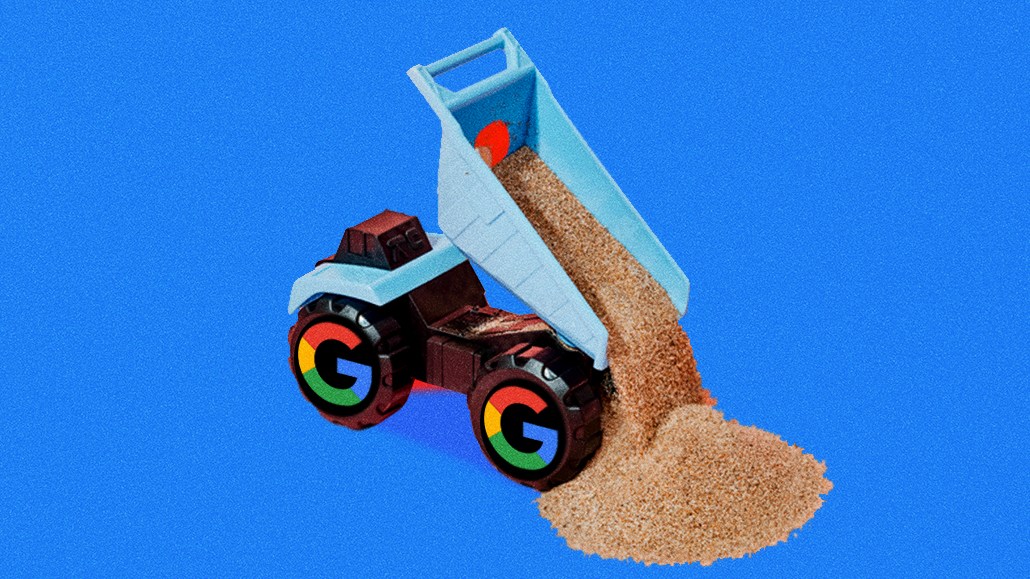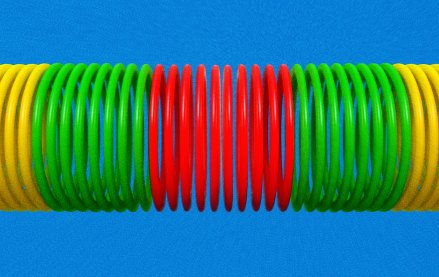Ad Tech Briefing: Farewell to Google’s Privacy Sandbox, we barely knew ye

This Ad Tech Briefing covers the latest in ad tech and platforms for Digiday+ members and is distributed over email every Tuesday at 10 a.m. ET. More from the series →
Farewell Privacy Sandbox, we barely knew ye.
At its launch, Google heralded it as a bold declaration of the end era of the third-party cookie — the connective tissue that helped build the digital marketing ecosystem — and the dawn of a new age of privacy-first ad technology.
However, last week, Google confirmed that it was retiring the project, ending half a decade of efforts, which often involved much chagrin.
After debuting in late 2019, Privacy Sandbox involved many rewrites, delays and (ultimately) dwindling faith. It now lies in the Google graveyard, with its obituary lying beside that of Google Glass, Google+; no doubt Privacy Sandbox merch will be looked upon with the same sense of nostalgia as DoubleClick-branded kit years from now.
The birth & promise
At the start of the decade, even before the Covid-19 pandemic, Google introduced Privacy Sandbox with significant fanfare and an unmistakably ambitious premise: to replace third-party cookies in its Chrome browser with a suite of browser-native APIs that would protect user privacy while still enabling ad targeting, measurement and fraud prevention.
The initiative promised five APIs for things like conversion measurement, “trust tokens,” interest grouping via cohorts — all built into the browser itself. The industry watched keenly, hopeful that this might be a credible way to reconcile publisher ad revenues with user privacy.
The hurdles & slow burn
From the start, however, the sand under the Sandbox was loose. The ad-tech ecosystem questioned whether Google would give itself an advantage; whether the proposed APIs would offer the utility and performance advertisers expected; and whether the sheer complexity of the browser-based model could match the decades of investment behind cookies. Over successive years, the project suffered delays — targeted deprecation dates for cookies kept slipping — and the momentum began to wane.
However, in March 2025, publishers told Digiday that investment in the initiative had stalled and publishers and adtech vendors were pulling back, and by May 2025 — after Google confirmed that it was to U-turn on its plans got third-party cookies in Chrome — publishers bluntly declared: “It’s dead..”
Regulatory pressure
The crisis came not simply from internal decay, but from external pressure. Regulatory scrutiny piled up, with the U.K.’s Competition and Markets Authority questioning whether the Sandbox commitments were still necessary or whether Google’s dominance in Chrome and ad tech had been baked into the design.
Then in April, Google publicly announced it would step back from fully disabling third-party cookies by default in Chrome — a deferral that many interpreted as the practical death knell for the Sandbox as originally conceived.
The aftermath and what stayed
What remains of Privacy Sandbox now is a set of half-built APIs, some browser privacy features, and a cautionary tale. Many publishers and ad-tech firms moved on, focusing instead on first-party data and alternate identity strategies.
Digiday found that adoption of Sandbox tests had effectively ended for some: “I don’t know why anyone would [focus on Privacy Sandbox] again,” one consultant told the publication. Google still insisted that the APIs are alive even after this sentiment became popular. But the bright vision of replacing the cookie with a clean, open-standard browser-based stack now seems to have faded.
The legacy
So what do we remember? The Privacy Sandbox will be studied for lessons.
- The scale of re-engineering ad tech that browsers and ecosystems face when shifting away from cookies.
- The tension between privacy goals and ad-tech utility — “you make something more private, it becomes less addressable and less measurable,” one publisher told Digiday.
- The power of regulation and competitive forces to up-end even the biggest projects of tech giants.
- And perhaps that no matter how well-intentioned an initiative may be, without market alignment, incentives and clear timelines, it can wither.
In memoriam
Here lies the Google Privacy Sandbox — launched with idealism, delayed by complexity, hobbled by regulatory scrutiny, and ultimately paused by its own parent’s strategic retreat. The ad tech world moves on, but the memory remains: the sandbox, once brimming with possibilities, stands empty now.
May its story guide the next generation of digital ad innovation — modest, realistic, and built for the real world, not just the browser’s ideal.
What we’ve heard
“I can’t believe they gave them the stage to announce a fork in the [Transaction ID] project.”
– One attendee of the 2025 Prebid Summit expressed surprise that The Trade Desk CEO was given the stage to discuss OpenAds, a development many saw as a rebuke to its efforts, and launch of a sell-side product.
Numbers to know
- 4.3%: The global annual inflation rate for the ad industry this year, per World Federation of Advertisers research.
- 4.2%: The projected annual inflation rate for the ad industry in 2026, according to the WFA.
- 3.8%: The annual inflation rate for the U.S. ad industry this year, per the WFA.
- 4.0%: The projected annual inflation rate for the U.S. ad industry in 2026, according to the WFA.
What we’ve covered
At this year’s Prebid Summit, AI, antitrust and existential angst dominated discussion as ad-tech veterans warned of upheaval. The Trade Desk’s Jeff Green defended OpenAds as cooperative, not competitive, while Scope3’s Brian O’Kelley teased a new “agentic advertising” alliance — touting it as a transformative step toward a sustainable, AI-era publishing model
Publisher alliance Ozone makes a larger play for U.S. advertisers
Publisher alliance Ozone is expanding rapidly in North America., adding major partners like The Wall Street Journal, CNN and BBC (U.S.). Founded by a number of U.K.-based publisherss, it’s evolved from an inventory pool into a data-driven audience platform, fueling £400 million ($532 million) in publisher revenue and challenging Google and Meta.
What we’re reading
AppLovin axes product tied to unwanted app download allegations
AppLovin has shut down its Array product after allegations it enabled unwanted app installations on Android devices. The company said Array was only a test and “not economically viable,” denying any unauthorized downloads. Critics, including consultant Ben Edelman and short-seller Culper Research, accused AppLovin of “silent” app installations.
The open internet 2025, part 3: SSPs, not dead yet (and why they still matter)
Claims that SSPs are “dead” are overblown. A thoughtful defense argues they’re evolving — not vanishing — by prioritizing transparency, responsible data use, and better targeting. OpenX highlights its quality-first, data-led model and stance against exploitative bid duplication, positioning SSPs as vital allies bridging buyers, publishers, and sustainable media.
Meta withdraws from MRC brand safety audits
Meta has lost its Media Rating Council brand safety accreditation for Facebook and Instagram feeds, just months after earning it. The revocation followed Meta’s decision to withdraw from the MRC’s annual audit program, prompting the council to remove its accreditation and listings in accordance with standard procedure.
How marketing procurement is starting to show up around ad industry events
Procurement executives are becoming more visible at marketing events like Advertising Week New York, seeking deeper involvement in marketing and AI discussions. Led by Christine Moore of Raus Global and founder of Women in Marketing Procurement, the group fosters collaboration, addressing contract, value, and AI challenges while bridging historic tensions with marketers.
More in Media Buying

Ad Tech Briefing: Big Tech won 2025 (even when it lost)
How AI, commerce media and scale reshaped ad tech in 2025 to the benefit of Big Tech.

How brands shifted marketing and media strategies through year of tariffs
Marketers share how they navigated the maze of tariffs and regulatory changes this year.

Media Buying Briefing: Omnicom Media execs begin their pitch outreach ahead of an expected new-business glut
Omnicom’s acquisition of IPG is only a few weeks old, but its combined offer to the market will soon be put to the test as it meets with consultants.






